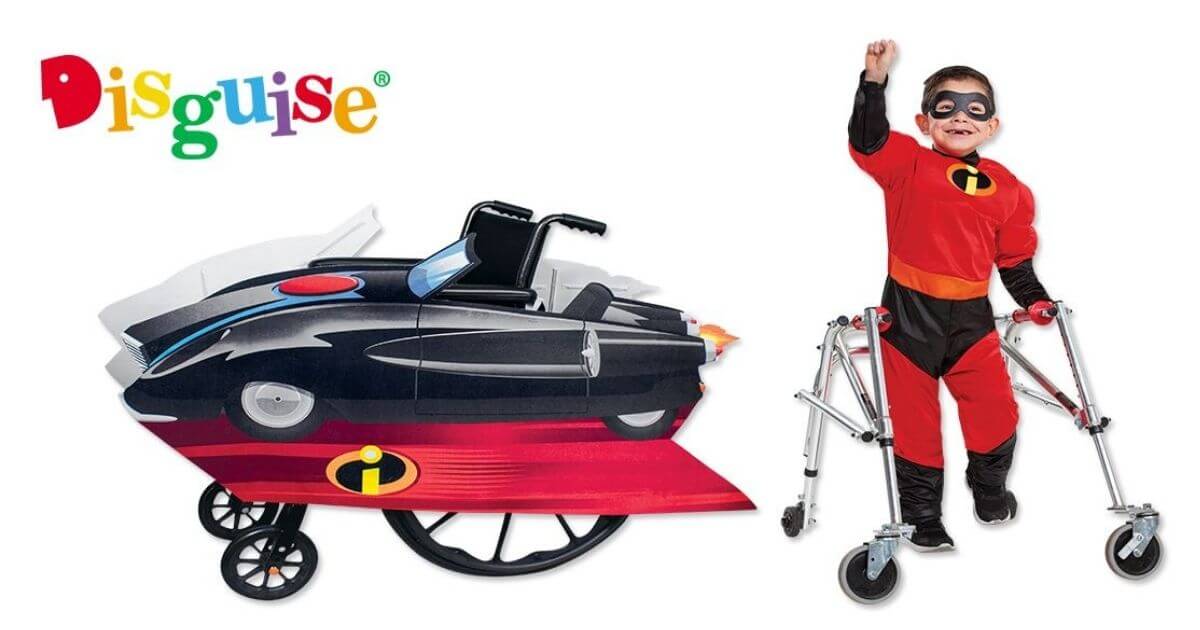Licenses Grow in Adaptive Products Segment

Product suppliers are adapting to a growing trend, one that’s about being fun, fashion-forward and functional in designing adaptive apparel and other products that meet the needs of consumers with disabilities, chronic illness and other maladies. And it’s also a market that’s ripe for licensing.
For example, Zappos licensed PBS Kids’ Arthur for footwear ($55) that combines current design trends with functional elements such as adding zippers to ease putting the shoes on and taking them off. And there’s Jakks Pacific, whose Disguise division last year launched adaptive costumes ($49) and wheel chair covers ($44) on DisneyShop.com across a range of Disney brands including The Incredibles, Cinderella, Toy Story, Frozen. It has since added licenses such as Batman, Trolls and Transformers Bumblebee, says a company spokeswoman., and distribution will broadened this year to Walmart, Target and Amazon.
Providing an Option
Jakks designed the products internally after noticing interest on social media. “It has been clear on social media that the appetite for these accessible costumes has grown over the years,” says the spokeswoman. “We wanted to provide an option for families and caregivers that don’t have the option, resources or time for doing this as a DIY project.”
The market for adaptive products is sizeable. There are 61 million adults and 2.8 million children (5-15 years old) in the U.S. with disabilities, according to the U.S Census Bureau. In the UK, there are 14.1 million disabled people.
Business Opportunity… and CSR
“From a business position, there clearly has been a demand and from a CSR position there is a huge statement about inclusivity which is very important now,” says a licensing executive at one large apparel supplier. “There are a number of brands that want to get their product seen by consumers who may not have seen” mainstream brands with products tailored to their needs.
One positioning question for suppliers, he says, is “how much do you bring it into your main line and how much do make it separate with a distinctive message.”
Not unlike standard apparel, tops and bottoms tend to be top-sellers, but with alterations such as hidden pull loops (for putting on apparel), magnetic and Velcro attachments, elastic waistbands and wider neck and arm openings. But much like standard apparel, brands are popular. Tommy Hilfiger’s Adaptive line is stocked with more than 140 SKUs including stretch cotton dot shorts with buttons on the sides and jeans with adjustable waist magnet buttons. Zappos Adaptive, Billy Footwear and RoShamBo toddler eyewear collaborated on 12 styles of Arthur footwear and eyewear.
One headquarters for adaptive apparel could well be Global Brands Group-owned Juniper Unlimited, which launched a specialty ecommerce business in the U.S. and UK featuring GBG’s Yarrow and Frye brands. GBG introduced Juniper with the 2019 acquisition of MagnaReady, a company that has patents related to magnetic closures for clothing. GBG has a broad array of licenses in its portfolio, and it’s logical to assume that some of those could be extended into adaptive products.
In the U.S., Target has been gradually building out adaptive under its Cat and Jack children’s private label. It started in 2017 with 40 SKUs developed with soft cotton knits with flat seams and no tags, which are irritating for autistic children.
“The fashion industry has always been the teacher, but this is one avenue where the fashion industry doesn’t have all the answers, so it’s an opportunity for collaboration and consultation with people with disabilities,” says Sinead Burke, Executive Producer and Editor-At-Large at Juniper, noting that people with disabilities are involved in designing apparel for the site.
While apparel has been among the first major thrusts for adaptive products, there are signs other categories are following. Microsoft launched adaptive controllers for Xbox in 2018 that feature large programmable buttons for gamers with limited mobility, while the beauty brand L’Occitane began offering Braille packaging for the visually impaired a year later.




